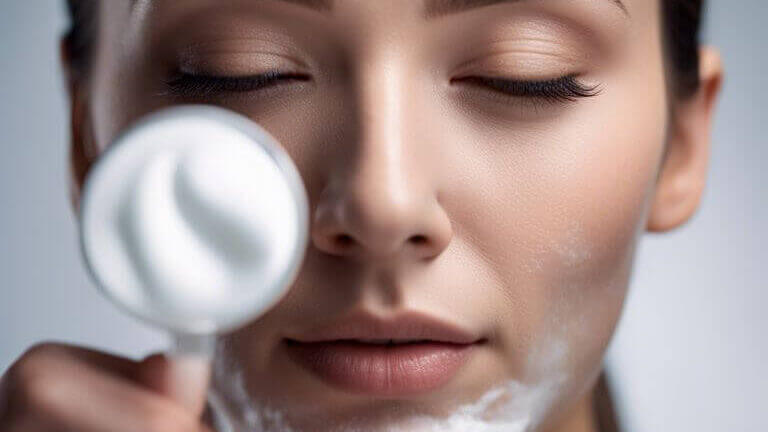It’s vital to prioritize your skin’s health and well-being after undergoing liquid nitrogen treatment.
This article serves as a valuable resource for individuals who have experienced this procedure, dermatology patients seeking guidance, and skincare enthusiasts looking to learn more.
Managing your skin post-treatment requires careful attention and specific measures to ensure optimal healing and rejuvenation.
By following the practical advice and insights provided, you can navigate the process with confidence and achieve a healthy, glowing complexion.
Let’s investigate the world of skin care after liquid nitrogen treatment and empower you to take charge of your skin’s recovery.
Understanding Liquid Nitrogen Treatment
The Science Behind Cryotherapy
Some may wonder about the science behind cryotherapy, especially when it comes to liquid nitrogen treatment.
Liquid nitrogen, with its incredibly low temperature of -320°F, is used to freeze and destroy abnormal skin cells.
This process, known as cryotherapy, is commonly used in dermatology for various treatments.
Common Dermatological Uses
For cryotherapy, common dermatological uses include treating warts, precancerous skin conditions, and certain types of skin cancers.
It is a highly effective method that targets specific areas needing treatment while leaving surrounding healthy skin unharmed.
For instance, liquid nitrogen treatment on a wart involves applying the liquid nitrogen directly to the wart, causing it to freeze and eventually fall off.
This targeted approach is minimally invasive and can produce excellent results.
What to Expect During the Procedure
Common during liquid nitrogen treatment, patients can expect a brief stinging or burning sensation as the liquid nitrogen is applied to the skin.
It is vital to follow post-treatment care instructions carefully to ensure proper healing and minimize any potential side effects.
Immediate Post-Treatment Care
First 24 Hours: Essential Steps
After undergoing liquid nitrogen treatment, it is crucial to take immediate steps to care for your skin.
With gentle cleansing using a mild soap and water, followed by the application of a soothing moisturizer, you can help your skin recover swiftly.
Managing Pain and Discomfort
Post-treatment, it’s common to experience pain and discomfort.
PostTreatment care involves utilizing over-the-counter pain relievers and applying a cool compress to the treated area to alleviate discomfort.
A comprehensive aftercare guide includes a list of care tips to help you navigate potential side effects such as redness, swelling, and blistering.
These symptoms should be closely monitored and reported to your dermatologist if they worsen.
In-Depth Skin Care in the Following Days
Unlike other skin treatments, liquid nitrogen therapy requires special attention and care in the days following the procedure.
Daily cleansing rituals play a crucial role in maintaining the health and appearance of your skin.
Proper cleansing helps remove dead skin cells, excess oils, and impurities that may hinder the healing process.
Daily Cleansing Rituals
Care for your skin by using a gentle cleanser that is free of harsh chemicals and fragrances.
Opt for a mild, non-abrasive formula that won’t irritate the treated area.
Remember to pat your skin dry gently with a clean towel, avoiding any rubbing or tugging.
Moisturizing Techniques
Moisturizing is imperative to restore hydration and promote skin healing after liquid nitrogen treatment.
Choose a lightweight, non-comedogenic moisturizer to prevent clogged pores.
Apply moisturizer to damp skin to lock in moisture and enhance absorption.
The key to effective moisturizing lies in selecting the right product for your skin type and addressing any specific concerns like dryness or sensitivity.
Look for ingredients such as hyaluronic acid, glycerin, and ceramides to replenish moisture and strengthen the skin barrier.
Protecting the Treated Area from Further Damage
An important aspect of post-treatment care involves protecting the treated area from sun exposure and external irritants.
Shield your skin with a broad-spectrum sunscreen of at least SPF 30 to prevent UV damage and premature aging.
Furthermore, avoid exfoliating products, harsh scrubs, and abrasive treatments that may aggravate the skin’s sensitivity post-liquid nitrogen therapy.
Be gentle and mindful of the delicate state of your skin, prioritizing its recovery above all else.
Dressings and Wound Care
Many individuals who have undergone liquid nitrogen treatment may require specific dressings and wound care to promote proper healing and minimize the risk of complications.
Proper dressing selection and wound care techniques are vital in supporting the skin’s recovery process and preventing infection.
In this chapter, we will explore the importance of dressings and wound care after liquid nitrogen treatment and provide practical guidance for managing skin health effectively.
Types of Dressings: Pros and Cons
Types of dressings play a crucial role in wound healing after liquid nitrogen treatment.
It is vital to understand the pros and cons of different dressing options to make informed decisions regarding wound care. Below is a breakdown of the advantages and disadvantages of common types of dressings:
Types of Dressings Pros and Cons Gauze Pros: Breathable, absorbent
Cons: May stick to wounds Hydrocolloid Pros: Forms a gel, promotes healing
Cons: Not breathable, may cause skin irritation Transparent film Pros: Waterproof, allows visualization of wound
Cons: Not absorbent Alginate Pros: Highly absorbent, promotes moisture balance
Cons: May cause skin irritation Foam Pros: Absorbent, provides cushioning
Cons: May be bulky Changing Dressings: Best Practices
Any dressing should be changed regularly to maintain a clean and healing environment for the skin.
When changing dressings, ensure that the wound area is clean, dry, and free from any debris or infection.
Gently remove the old dressing, clean the area with a mild antiseptic, and apply a new dressing following your healthcare provider’s instructions.
Proper wound care and dressing changes are crucial for optimal healing and preventing complications.
This care regimen helps to ensure that the skin heals properly and reduces the risk of infection.
By following best practices for changing dressings, you can promote faster healing and achieve better overall skin health post-liquid nitrogen treatment.
Signs of Improper Healing and When to Seek Help
Types of dressings and wound care techniques can greatly impact the healing process after liquid nitrogen treatment.
It is vital to monitor the wound for any signs of improper healing, such as excessive redness, swelling, warmth, or pus discharge.
If you notice any of these dangerous symptoms or if the wound does not show signs of improvement within the expected timeframe, seek medical attention promptly.
Your healthcare provider can assess the wound, provide additional treatment if necessary, and ensure proper healing.
Pain Management Strategies
Over-the-Counter Solutions
Despite undergoing liquid nitrogen treatment for skin issues, pain management is a crucial aspect of recovery.
For immediate relief, over-the-counter solutions such as ibuprofen or acetaminophen can help alleviate discomfort during the healing process.
These medications can reduce inflammation and provide temporary relief from any lingering pain or soreness.
Natural Remedies and Alternatives
Management of pain after liquid nitrogen treatment can also benefit from natural remedies and alternatives.
Options like aloe vera gel, which has anti-inflammatory and cooling properties, can help soothe the skin and reduce pain.
Additionally, applying a cold compress or taking a warm bath with Epsom salts can provide relief and relax the affected area.
When to Consult Your Dermatologist About Pain
Strategies for managing pain after liquid nitrogen treatment should include knowing when to seek professional help.
If the pain persists or worsens, or if you experience excessive redness, swelling, or pus-filled blisters, it is vital to consult your dermatologist immediately.
These symptoms may indicate an infection or a complication that requires medical attention.
Infection Prevention and Control
Understanding the Risk Factors for Infection
Your skin is in a delicate state after undergoing liquid nitrogen treatment, making it more susceptible to infections.
Potential risk factors for infection include compromised skin barriers, existing skin conditions, and poor wound care practices.
It is imperative to be aware of these risks to effectively prevent infections. This knowledge will empower you to take proactive measures in protecting your skin post-treatment.
Antiseptic Measures to Take at Home
An important aspect of post-treatment care is implementing antiseptic measures at home to prevent infections.
This includes keeping the treated area clean and dry, applying prescribed ointments or creams as directed by your dermatologist, and avoiding harsh skincare products that may irritate the skin.
It is crucial to follow these guidelines meticulously to promote proper healing and reduce the risk of infections.
When to Report Possible Infections
Infection control is vital in the post-treatment phase.
If you notice any signs of infection such as increased redness, swelling, pain, or discharge from the treated area, it is crucial to report it to your dermatologist immediately.
Timely intervention can prevent the infection from worsening and aid in the healing process.
Recall, your dermatologist is your ally in ensuring your skin health post-treatment.
Supporting Skin Regeneration and Healing
Nutritional Support for Skin Repair
All skin needs proper nourishment to regenerate and heal, especially after undergoing a treatment as intense as liquid nitrogen therapy.
Boost your skin’s repair process by incorporating foods rich in vitamins A, C, and E – necessary nutrients for skin health.
Berries, citrus fruits, almonds, and leafy greens are excellent options to include in your diet to support your skin’s healing journey.
The Role of Hydration in Skin Health
Proper hydration is crucial for skin health, aiding in the regeneration process after liquid nitrogen treatment.
Hydrated skin is more resilient and better able to repair itself.
Aim to drink at least eight glasses of water a day and consider incorporating hydrating skincare products to maintain skin moisture levels.
HealthKeeping your skin hydrated not only promotes healing but also helps maintain skin elasticity and prevent premature aging.
Consider incorporating hyaluronic acid serums or moisturizers into your skincare routine to replenish moisture levels and support overall skin health.
Scar Prevention and Minimization
RegenerationWith proper care and attention, you can minimize the appearance of scars post-liquid nitrogen treatment.
Consistent use of sunscreen on the treated area is crucial to prevent hyperpigmentation and further skin damage.
Additionally, consider using products containing ingredients like vitamin C or retinol to promote skin cell turnover and reduce the visibility of scars.
Lifestyle Adjustments During Recovery
Activity Modifications to Support Healing
The road to recovery after liquid nitrogen treatment can be challenging, but it is imperative to prioritize your skin’s health during this time.
Not pushing yourself too hard physically is key to allowing your skin to heal properly.
Avoid strenuous activities that may cause sweating or friction on treated areas.
Instead, opt for gentle exercises like yoga or walking to promote circulation without exacerbating any irritation.
Clothing and Fabric Considerations
To ensure the best outcomes post-treatment, it is crucial to pay attention to the clothing and fabrics that come in contact with your skin.
Select loose-fitting, breathable garments made from supportive natural fibers like cotton or linen.
These materials allow your skin to breathe and reduce the risk of irritation or chafing.
This support for your skin can aid in maintaining its barrier function and preventing further damage as it heals.
Managing Sun Exposure and Protecting Sensitive Skin
As your skin recovers from liquid nitrogen treatment, any exposure to harmful UV rays can impede the healing process and cause further damage.
It is crucial to support your skin by applying a broad-spectrum sunscreen with at least SPF 30 daily, even on cloudy days.
Additionally, seek shade, wear protective clothing, and use hats and sunglasses to shield your skin from the sun’s harmful effects.
Soothing Treated Areas and Reducing Itchiness
Safe Itch Relief Methods
Now, after undergoing liquid nitrogen treatment, it’s important to prioritize soothing and reducing itchiness in the treated areas.
For safe itch relief, consider using gentle, non-irritating moisturizers and creams that contain ingredients like aloe vera or calendula.
These natural ingredients can help calm inflammation and promote healing without causing further irritation.
Products to Avoid on Treated Skin
Safe products play a crucial role in managing skin health post-liquid nitrogen treatment.
It’s imperative to avoid harsh exfoliants, fragranced products, and alcohol-based toners. These can further irritate the skin and delay the healing process.
Opt for gentle, unscented products specifically formulated for sensitive skin to prevent any adverse reactions.
When Itchiness Indicates a Larger Issue
Skin health post-liquid nitrogen treatment requires careful attention to any signs of a larger issue.
If itchiness persists or worsens despite using soothing products, it could indicate an infection or allergic reaction.
In such cases, consult your dermatologist immediately for proper diagnosis and treatment to prevent any complications.
Long-Term Skin Care and Observation
Regular Skin Examinations Post-Treatment
Unlike other skincare treatments, liquid nitrogen therapy requires ongoing observation and care to monitor the skin’s healing process.
To ensure long-term skin health, it is necessary to schedule regular skin examinations with your dermatologist or healthcare provider.
These examinations will help detect any signs of potential issues or recurrence, allowing for prompt intervention and treatment.
Ongoing Moisturization and Maintenance
Examinations have shown that consistent moisturization is key to maintaining skin health post-liquid nitrogen treatment.
Regular application of a gentle, hydrating moisturizer can help restore moisture levels, improve skin texture, and prevent dryness or irritation.
Additionally, incorporating sunscreen into your daily skincare routine can protect the skin from harmful UV rays, promoting overall skin health.
Recognizing Persistent Issues and Recurrence
Issues may arise post-treatment, and it is crucial to be vigilant in recognizing any persistent problems or signs of a recurrence.
If you notice any unusual changes in your skin, such as persistent redness, itching, or new growths, it is vital to consult your dermatologist immediately.
Early detection and timely intervention can significantly impact the outcome of treatment and ensure long-term skin health.
Survivor’s Kit: Recommended Products
Cleansers and Moisturizers for Sensitive Skin
For those who have undergone liquid nitrogen treatment, it is crucial to prioritize gentle cleansing and hydration.
Look for fragrance-free, non-irritating cleansers and moisturizers specifically formulated for sensitive skin.
Opt for products with hydrating ingredients like hyaluronic acid and ceramides to maintain skin integrity and prevent dryness.
Sunscreen and Protective Gear
Protective measures are crucial post-liquid nitrogen treatment to shield the skin from further damage.
Invest in a broad-spectrum sunscreen with SPF 30 or higher and consider adding a wide-brimmed hat and UV-protective clothing to your arsenal.
UV exposure can exacerbate post-treatment sensitivity, making sun protection a non-negotiable step in your skincare routine.
Another crucial consideration is incorporating healing enhancers and barrier creams into your regimen to aid in the recovery process.
Barrier creams help repair the skin’s natural protective barrier and promote healing, while healing enhancers containing ingredients like aloe vera and chamomile can soothe irritation and reduce inflammation.
Navigating Emotional Recovery and Support Systems
Coping with the Psychological Impact of Treatment
Psychological Keep in mind that undergoing liquid nitrogen treatment can have not only physical but also psychological effects on individuals.
It is normal to experience a range of emotions such as anxiety, depression, or even social withdrawal during the recovery process.
It’s crucial to acknowledge and address these feelings to promote a healthy healing environment.
Finding Community and Support Networks
With While going through the aftermath of liquid nitrogen treatment, remember that you are not alone.
Finding community and support networks can provide a sense of belonging and understanding during this challenging time.
Connecting with others who have undergone similar experiences can offer valuable insights, tips, and emotional support.
Communication with Healthcare Providers for Emotional Well-being
Support It is crucial to maintain open communication with your healthcare providers for emotional well-being after liquid nitrogen treatment.
Discussing any concerns, fears, or emotional struggles with your dermatologist or healthcare team can help them provide tailored support and resources to address your specific needs effectively.
To wrap up
Following this comprehensive guide, individuals who have undergone liquid nitrogen treatment can navigate the post-treatment phase with confidence and knowledge.
By prioritizing gentle skincare routines, protecting the skin from sun exposure, and monitoring any signs of irritation or infection, you can ensure a smooth recovery and maintain healthy skin.
Remember to consult your dermatologist for personalized advice and guidance tailored to your specific skin concerns.
With dedicated care and attention, your skin will bounce back from the treatment, revealing a radiant and rejuvenated complexion.
Embrace a skincare regimen that nurtures and supports your skin’s healing process, allowing you to confidently face the world with a renewed sense of confidence and comfort.








